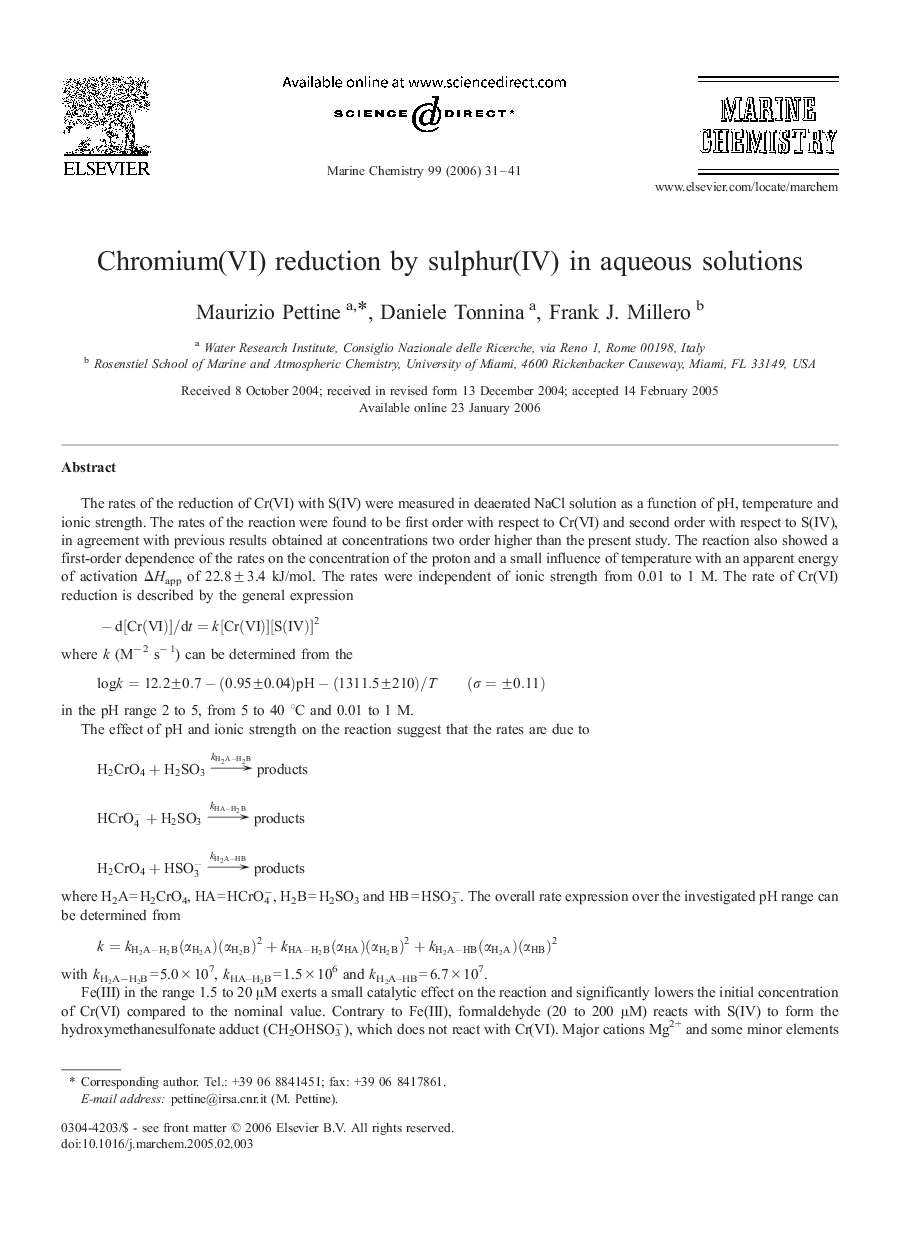| Article ID | Journal | Published Year | Pages | File Type |
|---|---|---|---|---|
| 1263396 | Marine Chemistry | 2006 | 11 Pages |
The rates of the reduction of Cr(VI) with S(IV) were measured in deaerated NaCl solution as a function of pH, temperature and ionic strength. The rates of the reaction were found to be first order with respect to Cr(VI) and second order with respect to S(IV), in agreement with previous results obtained at concentrations two order higher than the present study. The reaction also showed a first-order dependence of the rates on the concentration of the proton and a small influence of temperature with an apparent energy of activation ΔHapp of 22.8 ± 3.4 kJ/mol. The rates were independent of ionic strength from 0.01 to 1 M. The rate of Cr(VI) reduction is described by the general expression−d[Cr(VI)]/dt=k[Cr(VI)][S(IV)]2−d[Cr(VI)]/dt=k[Cr(VI)][S(IV)]2where k (M− 2 s− 1) can be determined from thelogk=12.2±0.7−(0.95±0.04)pH−(1311.5±210)/T(σ=±0.11)in the pH range 2 to 5, from 5 to 40 °C and 0.01 to 1 M.The effect of pH and ionic strength on the reaction suggest that the rates are due toH2CrO4+H2SO3→kH2A–H2BproductsHCrO4−+H2SO3→kHA–H2BproductsH2CrO4+HSO3−→kH2A–HBproductswhere H2A = H2CrO4, HA = HCrO4−, H2B = H2SO3 and HB = HSO3−. The overall rate expression over the investigated pH range can be determined fromk=kH2A–H2B(αH2A)(αH2B)2+kHA–H2B(αHA)(αH2B)2+kH2A–HB(αH2A)(αHB)2k=kH2A–H2B(αH2A)(αH2B)2+kHA–H2B(αHA)(αH2B)2+kH2A–HB(αH2A)(αHB)2with kH2A−H2B = 5.0 × 107, kHA–H2B = 1.5 × 106 and kH2A–HB = 6.7 × 107.Fe(III) in the range 1.5 to 20 μM exerts a small catalytic effect on the reaction and significantly lowers the initial concentration of Cr(VI) compared to the nominal value. Contrary to Fe(III), formaldehyde (20 to 200 μM) reacts with S(IV) to form the hydroxymethanesulfonate adduct (CH2OHSO3−), which does not react with Cr(VI). Major cations Mg2+ and some minor elements such as Ba2+ and Cu2+ did not affect the rates. The application of this rate law to environmental conditions suggest that this reaction may have a role in acidic solutions (aerosols and fog droplets). This reaction becomes more important in the presence of high Fe(III) and low HMS concentrations, contributing to affect the atmospheric transport of chromium species and the distribution of redox species of chromium, which reach surface water from atmospheric depositions.
